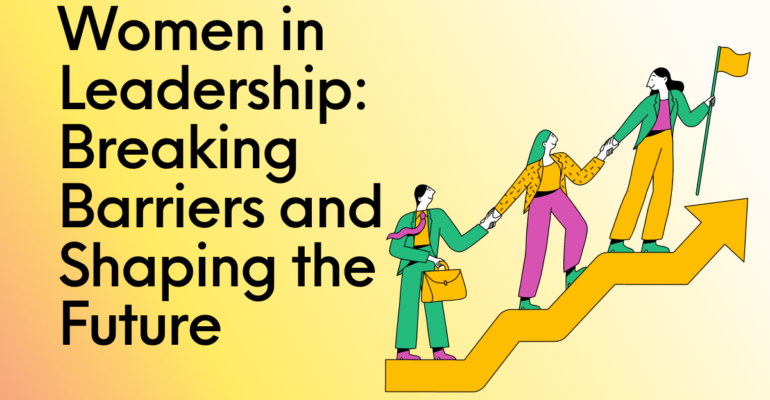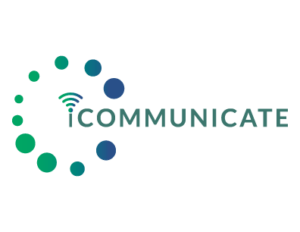Women in Leadership: Breaking Barriers and Shaping the Future
January 17, 2024 2024-01-17 19:56Women in Leadership: Breaking Barriers and Shaping the Future

Women in Leadership: Breaking Barriers and Shaping the Future
Earhart navigated the celestial airways with soaring ambition. Cleopatra’s astute dominion over an ancient empire won the hearts of powerful men. Angelou captured the angst and glory of the human soul through the written word. Malala Yousafzai, a recent Nobel Peace Prize recipient, symbolizes resilience and advocacy for education and equality. Over time, many women leaders whose names we may not know have stitched vibrant threads of change and strength in the tapestry of human achievement. Their actions, steeped in courage and vision, have reshaped our understanding of command and influence.
This blog celebrates the extraordinary contributions of women leaders whose fortitude and innovative thinking continue to redefine our perception of leadership, breaking through the hardened ceilings of convention and expectation.
The Evolution of Women in Leadership Positions
Despite the inflexible boundaries that have traditionally confined individuals to narrow gender roles, women have played a crucial part in challenging and shifting these binaries. Their efforts have expanded the scope of what it means to be a leader, a woman, and ultimately, a human being in a complex society. Their courage and determination inspire us to continue breaking down barriers and creating a world where everyone can embrace their true identity.
Breaking Stereotypes in the Professional Realm:
Traditionally, leadership and professional success were predominantly associated with male traits. Women, however, have redefined this narrative. Figures like Indra Nooyi, former CEO of PepsiCo, and Sheryl Sandberg, COO of Facebook, have demonstrated that leadership encompasses qualities traditionally attributed to both genders, such as empathy, resilience, assertiveness, and strategic thinking. Their success has helped erode the notion that specific professional roles or leadership styles are inherently ‘male.’
Redefining Domestic and Family Roles:
The binary that placed women solely in domestic roles while men were the breadwinners has been significantly altered. Women like J.K. Rowling, who balanced single motherhood with her career as a bestselling author, showcase the multifaceted roles women can and do occupy. By excelling in domestic and professional arenas, women have demonstrated that these roles are not mutually exclusive or gender specific.
Challenging Gender Norms in Politics and Governance:
Women in politics have been pivotal in shifting gender binaries. Leaders like Angela Merkel, former Chancellor of Germany, and Jacinda Ardern, Prime Minister of New Zealand, have broken stereotypes around what political leadership looks like. Their governance styles, often blending strength with compassion, challenge the notion that political power is inherently masculine.
Transforming Social and Cultural Perceptions:
Cultural figures like Oprah Winfrey and Malala Yousafzai have altered perceptions of the role of women in society. Through their advocacy and influence, they’ve shown that women’s voices are crucial in societal discourse, moving beyond traditional roles to become thought leaders and change-makers on a global scale.
Top Strategies for Elevating Women in Leadership:
This section concentrates on the most effective strategies identified to support and advance women in leadership roles. These approaches not only aid in leveling the playing field but also enrich organizational dynamics and drive innovation.
- Cultivating Inclusive Work Cultures: Creating an environment where diversity is celebrated and inclusivity is the norm stands as a foundational strategy. This involves active efforts to dismantle biases, encourage diverse perspectives, and ensure that all voices, especially those of women, are heard and valued.
- Implementing Equity-Focused Policies: Adopting policies directly addressing gender disparities is critical. This includes equitable pay policies, transparent promotion criteria, and parental leave policies that recognize the responsibilities of both genders. Such policies promote fairness and signal an organization’s commitment to gender equality.
- Leadership Development Programs: Organizations benefit from investing in leadership development programs tailored for women. These programs should not only focus on skill development but also offer mentorship, networking opportunities, and exposure to various leadership styles and challenges.
- Encouraging Mentorship and Sponsorship: Effective mentorship and sponsorship are vital for women’s advancement. While mentors can offer guidance and advice, sponsors are crucial in advocating for women’s advancement and exposure within an organization. These relationships can be pivotal in navigating career pathways and opening doors to new opportunities.
- Flexible Work Arrangements: Recognizing women’s diverse responsibilities and needs, flexible work arrangements are crucial. Flexibility in work hours, remote working options, and understanding the need for work-life balance are strategies that can help retain and support women in leadership roles.
- Fostering Entrepreneurial Ecosystems: Providing access to resources, funding, and networks is essential for women in entrepreneurship. This includes creating platforms for women to pitch ideas, access venture capital, and connect with mentors and advisors who can guide them through the unique challenges of entrepreneurship.
- Promoting Gender Diversity in Decision-Making: Ensuring that decision-making bodies within organizations have gender-diverse representation is a crucial strategy. This diversity leads to more balanced and comprehensive decision-making processes and sets a standard for inclusivity within the organization.
- Addressing Unconscious Bias: Training and awareness programs to address and reduce unconscious bias in the workplace are fundamental. These programs help create a more equitable environment by educating employees at all levels about the biases that can influence judgments and actions.
By implementing these strategies, organizations and societies can support women’s ascent into leadership roles and benefit from the diverse perspectives and skills they bring.
The Future of Gender Equality in Leadership: A Vision of Unbiased Brilliance
Imagine a future where the term ‘gender bias’ is a relic, a distant memory in the annals of history. In this future, the leadership landscape is a mosaic of diverse faces, ideas, and voices, unshackled from the constraints of stereotypes and unswayed by the archaic notion of gender roles.
In this world, the boardrooms and parliamentary halls echo with the voices of women and men, equally valued and equally heard. The young girl in a classroom dream as ambitiously as her male counterpart, knowing her path to leadership is unimpeded by her gender. Women and men lead together, their decisions shaped not by gendered expectations but by their expertise, empathy, and vision.
Organizations thrive with the infusion of diverse leadership styles, understanding that the blend of masculine and feminine traits – assertiveness with empathy, resilience with compassion – fosters a more holistic approach to governance and problem-solving. Women in leadership roles are no longer anomalies or token figures; they are integral to every leadership echelon, from tech startups to global conglomerates.
In the future, mentorship and sponsorship programs will be gender-neutral, focusing solely on talent and potential. Young professionals seek guidance and inspiration from leaders based on their achievements and wisdom, not gender. The gender pay gap is a concept studied in history classes, an example of a hurdle humanity overcame on its path to equality.
Leadership education and training programs no longer need special sessions focusing on ‘women in leadership’ because all leadership training inherently supports and includes perspectives and challenges unique to all genders. The media celebrates achievements irrespective of gender, highlighting accomplishments and innovations.
In this inspiring future, balancing family and work is a collective responsibility, a societal concern both men and women address. Workplaces are equipped to support this balance, not as a concession but as a norm.
This future is not a utopian dream but a tangible destination. It’s a world crafted by the relentless efforts of generations, built on the foundation laid by those who dared to challenge the status quo. It’s a future where gender equality in leadership is not just an aspiration but a reality, a testament to human progress, and an enduring legacy for the leaders of tomorrow.

